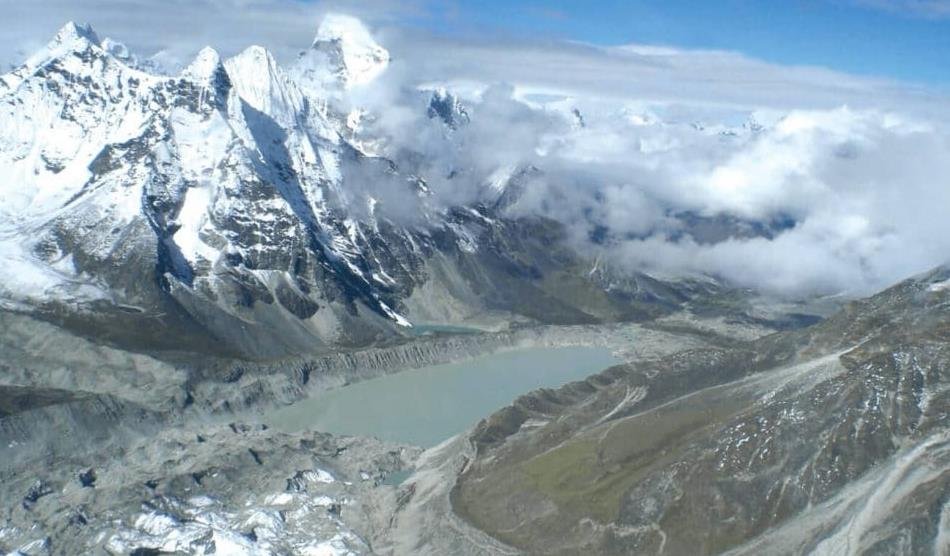The fate of the Himalayan glaciers, which provide water and livelihoods to billions of people, is hanging in the balance as the world grapples with the climate crisis. Scientists warn that the ice is melting faster than ever, and that the consequences could be devastating for the region and beyond. COP28, the UN climate summit in Abu Dhabi, is seen as a critical opportunity to address this urgent issue and secure a global commitment to save the Himalayan ice.
The Himalayas are often called the third pole, because they contain the largest amount of ice outside the polar regions. They span 10 countries and cover an area of 4.2 million square kilometers, hosting more than 50,000 glaciers. These glaciers feed 10 major river systems, including the Ganges, the Indus, and the Mekong, which support the lives of about 1.9 billion people in South and Southeast Asia.

However, the Himalayan glaciers are melting at an unprecedented rate, due to rising global temperatures and human activities. According to a report by the International Centre for Integrated Mountain Development (ICIMOD), the Hindu Kush Himalayas can lose around 50% of today’s ice if the higher limit of the Paris Agreement–2°C warming–is reached, causing irreversible damage. Even if the world manages to limit warming to 1.5°C, the region will still lose a third of its ice by the end of the century.
The melting of the Himalayan ice has serious implications for the water security, food security, biodiversity, and disaster risk of the region. It can also affect the global climate system, as the glaciers play a vital role in regulating the monsoon, the jet stream, and the albedo effect.
COP28: A chance to save the Himalayan ice
COP28, the 28th session of the Conference of the Parties to the UN Framework Convention on Climate Change, is taking place in Abu Dhabi from November 30 to December 12, 2023. The summit aims to accelerate the implementation of the Paris Agreement, which was adopted in 2015 and entered into force in 2016. The Paris Agreement seeks to limit the global average temperature rise to well below 2°C, preferably 1.5°C, above pre-industrial levels, by reducing greenhouse gas emissions and enhancing adaptation and resilience.
One of the key features of COP28 is the first Global Stocktake, which will assess the collective progress of the parties towards achieving the long-term goals of the Paris Agreement. The Global Stocktake will also inform the parties on how to update and enhance their nationally determined contributions (NDCs), which are the plans and actions that each country pledges to take to address the climate crisis.
COP28 is seen as a crucial opportunity to address the plight of the Himalayan glaciers and the people who depend on them. Several mountain countries, including Nepal, Bhutan, and Afghanistan, have called for more ambitious and urgent action to reduce emissions and increase adaptation support. UN Secretary-General Antonio Guterres has also urged the COP28 talks to respond to the needs of the Himalayas, saying that the region is “one of the most vulnerable and least responsible for the climate emergency”.
Some of the possible actions that COP28 can take to save the Himalayan ice include:
- Adopting a strong and balanced outcome that reflects the principles of equity, common but differentiated responsibilities, and respective capabilities, as well as the special circumstances and needs of the mountain countries.
- Recognizing the importance of the Himalayan glaciers for the regional and global climate system, and the multiple benefits of their conservation for water, food, energy, biodiversity, and disaster risk reduction.
- Enhancing the mitigation ambition and action of the major emitters, especially the developed countries, to limit the global warming to 1.5°C and prevent further loss and damage to the Himalayan glaciers and the communities that rely on them.
- Increasing the adaptation finance and support for the mountain countries, especially the least developed countries and the small island developing states, to help them cope with the impacts of the Himalayan ice melting and build resilience.
- Strengthening the scientific cooperation and knowledge sharing on the Himalayan glaciers, and supporting the efforts of the regional institutions, such as ICIMOD, to monitor and assess the changes and trends in the cryosphere.
- Promoting the participation and empowerment of the local and indigenous communities, especially the women and youth, in the decision-making and implementation of the climate actions related to the Himalayan glaciers.
Saving the Himalayan ice: A matter of survival and justice
The Himalayan glaciers are not only a natural wonder, but also a lifeline for millions of people. They are a source of water, food, energy, culture, and spirituality. They are also a symbol of the interdependence and solidarity among the countries and peoples of the region.
Saving the Himalayan ice is not only a matter of survival, but also a matter of justice. The mountain countries and communities are among the least responsible for the climate crisis, but they are bearing the brunt of its impacts. They have the right to demand more action and support from the international community, especially the developed countries, to protect their glaciers and their future.
COP28 is a historic opportunity to heed this call and to demonstrate the global commitment and cooperation to save the Himalayan ice. The fate of the third pole, and the world, depends on it.
